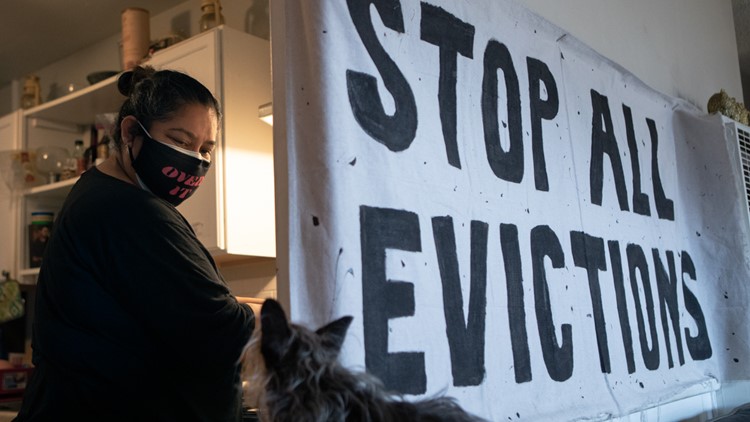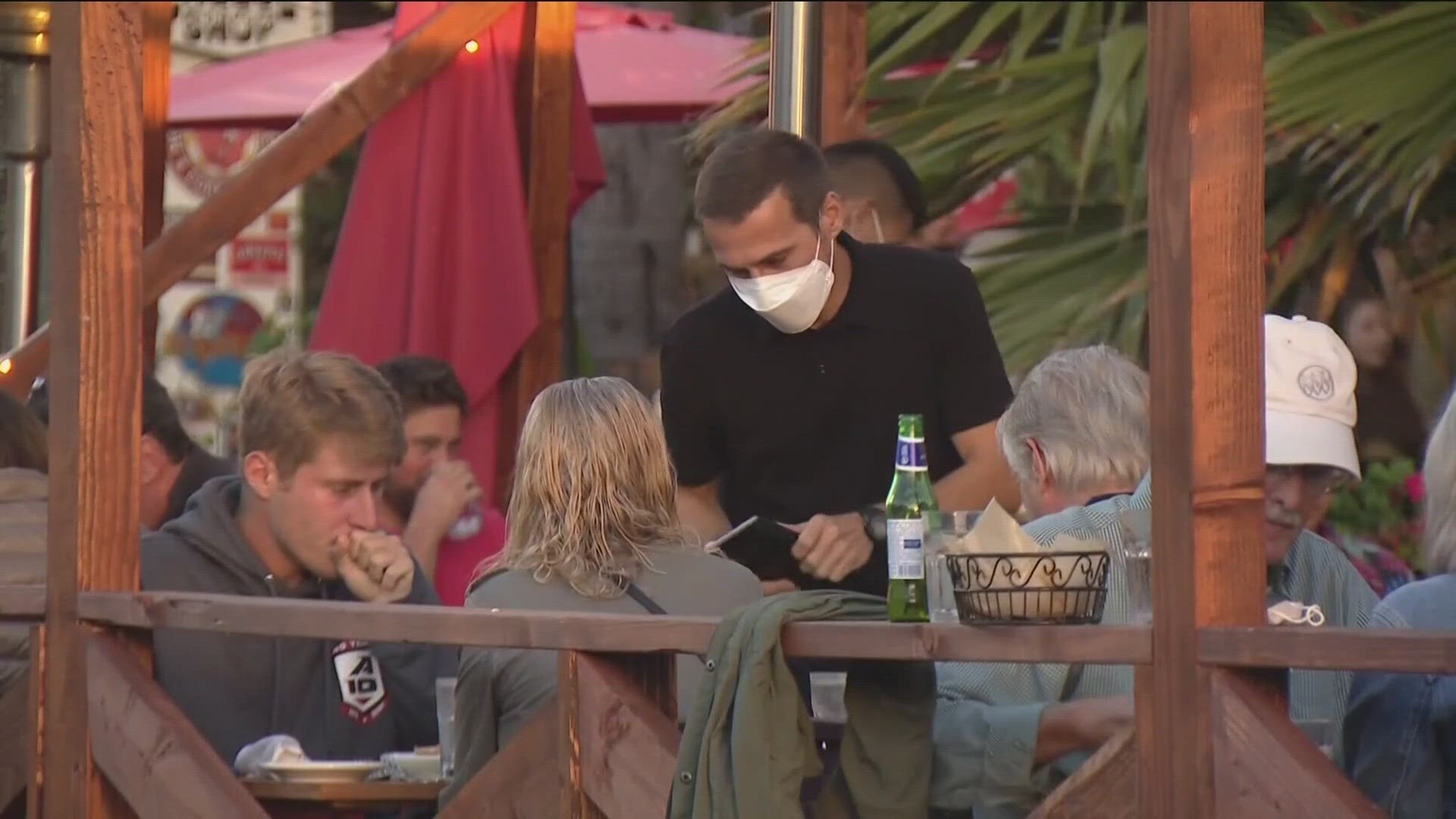SAN DIEGO COUNTY, Calif. — The city and county of San Diego set aside more than $47 million in federal coronavirus aid last fall to pay landlords whose low-income tenants were behind on rent.
But some eligible renters didn’t get any help because their landlords didn’t take the money and they weren’t required to explain why.
Public records obtained by inewsource show 1,268 eligible households were denied assistance from the county’s rent relief program because their landlords either refused to participate or missed deadlines. The city’s program, overseen by the San Diego Housing Commission, had 19 households with landlords who wouldn’t accept payments, an agency spokesperson said.
Now, more than $211 million in state and federal funds have poured into the region to help low-income renters. And under a new state law, this time the programs come with built-in incentives designed to persuade landlords to take the money.
Participating landlords would have to accept 80% of any rent owed since April through the end of this month and would have to waive the rest that is owed. If they refuse, eligible tenants would receive a payment for 25% of their rental debt over the same period. As long as tenants use that money to pay their landlord, they would still be protected from eviction until June 30 — when a state moratorium is scheduled to expire.
Under the new law, landlords would be required to accept an eligible tenant’s payment of 25%, said Debra Carlton, an executive with the California Apartment Association, the state’s largest landlord group.
“I don’t know what landlord would ever disagree with taking the 80%,” Carlton said, adding it’s the most any landlord could expect to collect at this point in the pandemic.
Grace Martinez, director of San Diego’s Alliance of Californians for Community Empowerment, said if a landlord refuses to participate this time around, they most likely just want the tenant gone. And some aren’t waiting for the moratorium to end before trying to evict their tenants, she said.

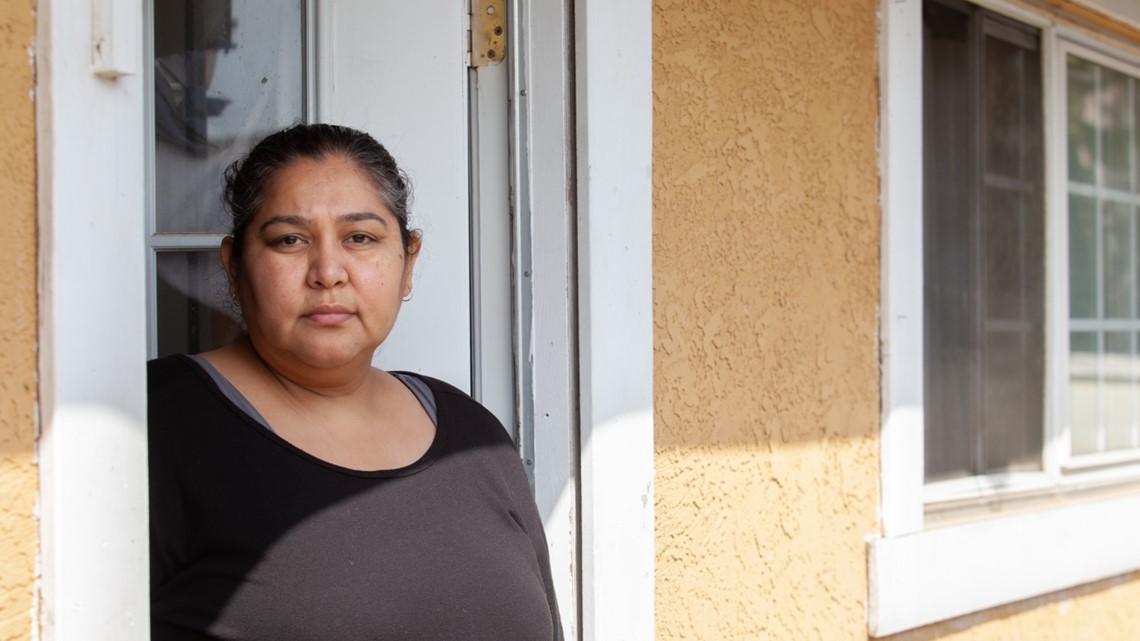
That appears to be the case for Patty Mendoza, an Imperial Beach renter and an outspoken member of the alliance. She was laid off from her non-emergency medical transport job in April, and the mother of two quickly fell behind in her rent.
Last fall, she qualified for the county’s rent relief program, and the most recent payment to her landlord was a $3,000 check sent in December.
Since then, her apartment building changed ownership and she has missed three more rent payments. Her new landlord sent her a “60-day notice of termination of tenancy,” giving her until April 10 to move out so renovations could be done. With the state moratorium in effect, that’s unlikely to happen.
Multiple messages from inewsource to her landlord, Gustavo Verdin, were not returned.
Mendoza has applied for the county’s latest program, but she fears her landlord won’t participate.

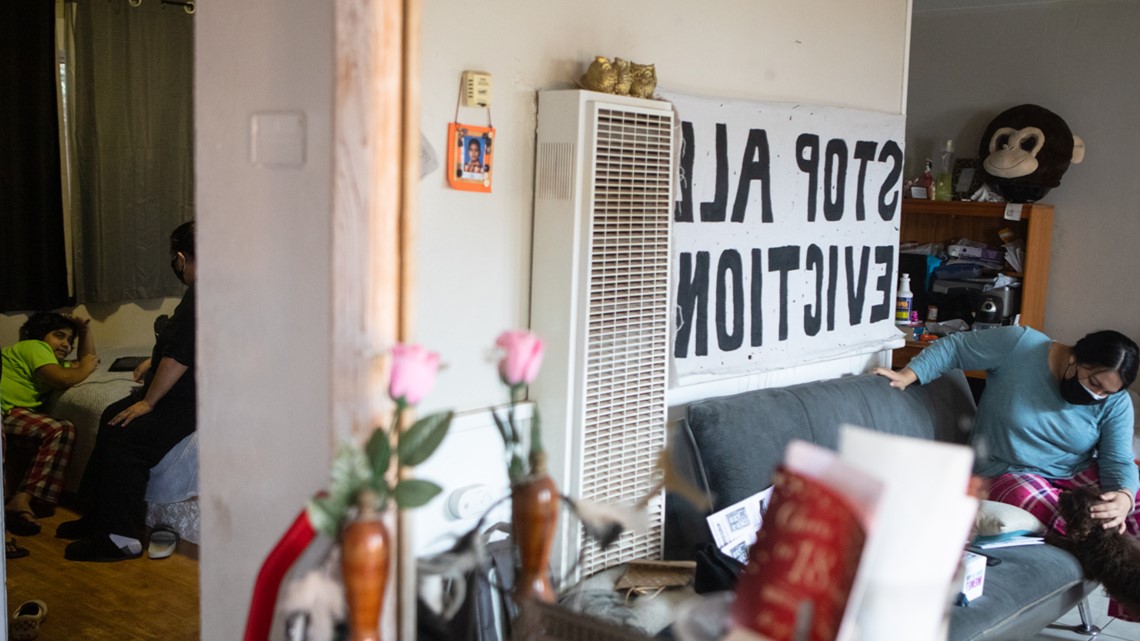
The single mom’s monthly rent for a two-bedroom, one-bath apartment is $1,500. A few Marilyn Monroe prints decorate her living room walls, and one giant “Stop All Evictions” banner faces the entryway.
She shares the apartment with her 17-year-old daughter and 10-year-old son, who are attending school online.
Before COVID-19 hit San Diego County a year ago, Mendoza said she was earning $2,000 a month from her job. Now she collects less than $200 a month in unemployment benefits, while continuing to receive $455 a month in child support. She’s had to rely on local food pantries to feed her family every week, while rent and utility bills pile up.
Although she applies for jobs, she said she hasn’t been able to find work. Even if she did, Mendoza said she worries her asthma would put her at risk for severe illness if she were infected with the virus.

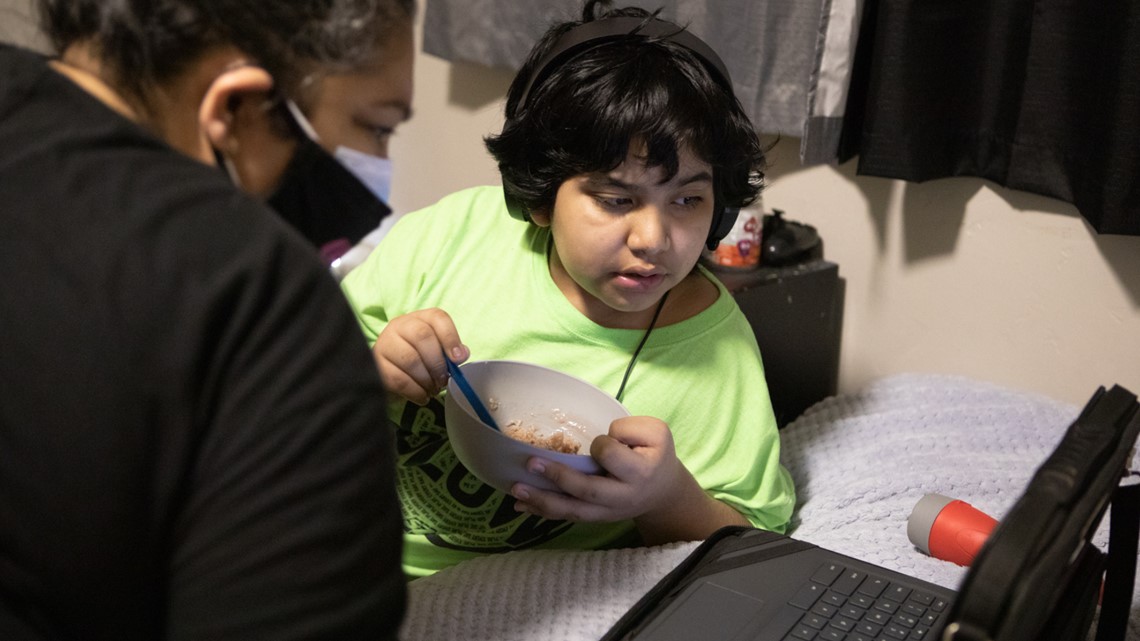
Mendoza said she’s tired of seeing her kids cry, wondering where they’ll live come April 10.
Her son, she said, often asks: “Mommy, where are we going to go? Mommy, where are we going to put all our stuff? Mommy, what’s going to happen to my bed?
“Like, what do you tell your kid?”
Some landlords wouldn’t participate
The average California household with unemployed workers has accumulated nearly $4,500 in rental debt through 2020, according to research released in January from the state’s nonpartisan Legislative Analyst’s Office. The situation could have been worse if local governments hadn’t used federal coronavirus aid last year to fund rental assistance programs.
The local programs weren’t perfect — San Diego’s was rife with delays and the county’s sent money to ineligible cities. Even with those problems, the money helped thousands of renters with their rent.
The county spent $27 million assisting more than 10,100 households with rent, records show. The city helped more than 3,700 households with $13.7 million. Both the tenant and the landlord had to cooperate and provide documentation to receive the assistance.
Where to apply for rent relief
Renters in San Diego and Chula Vista should apply through their city programs. All other renters should apply through San Diego County’s program.
The deadline to apply for the county’s program is Wednesday, March 31. Click here for details.
If you live in San Diego, click here for details.
If you live in Chula Vista, click here for details.
San Diego and Chula Vista do not have deadlines for applying.
But in some cases, landlords pushed back against both programs. Seventeen landlords declined to work with the city. When that happened, the San Diego Housing Commission used $78,000 in private donations to send payments directly to the renters, agency spokesperson Scott Marshall said.
In the county, nearly 1,240 landlords didn’t participate in the program. More than 75% missed the deadline to register for the program or provide the required documents to receive the money, data shows. But 285 landlords outright declined. County officials instead sent those payments to other eligible households, spokesperson Michael Workman said.
The city and county won’t release the names of the landlords, citing privacy reasons.
Lucinda Lilley, president of the Southern California Rental Housing Association, suspects those who didn’t participate just didn’t have the time to jump through the necessary hoops.
She and others in the industry prefer the term “housing provider” rather than “landlord.” For many of them, she said, renting out homes isn’t a full-time endeavor.
“It's something that they do in addition to their job … to make ends meet,” said Lilley, who is also vice president of a property management company. She said she relied on her accounting department to navigate the system for tenants.
Rental property owners have been categorized as “eviction hungry business owners,” Lilley said, but that’s really not the case.
“We need to, as housing providers, be willing to continue to house individuals and families, and support our communities,” she said. “Not to say that we believe that that should be done for free, by any stretch of the imagination.”
Some people haven’t received a rent payment from tenants since the pandemic began, she said, and they’re still expected to maintain the property and pay the mortgage.
Rent relief is ‘like a gift’
The economic calamity that COVID-19 has caused is not easing for many people.
A SANDAG report published this month found that about one in four people working jobs in San Diego County that don’t require a college education are still unemployed. And though the eviction moratorium has kept people in their homes, rental debt piled up in a county where census data shows nearly half of all housing units are occupied by renters.
That’s why California legislators passed the law in January to incentivize landlords. Using the latest round of federal assistance, the state aims to accomplish two things: erase all rental debt for eligible low-income tenants through the end of this month and give landlords most of what they are owed.

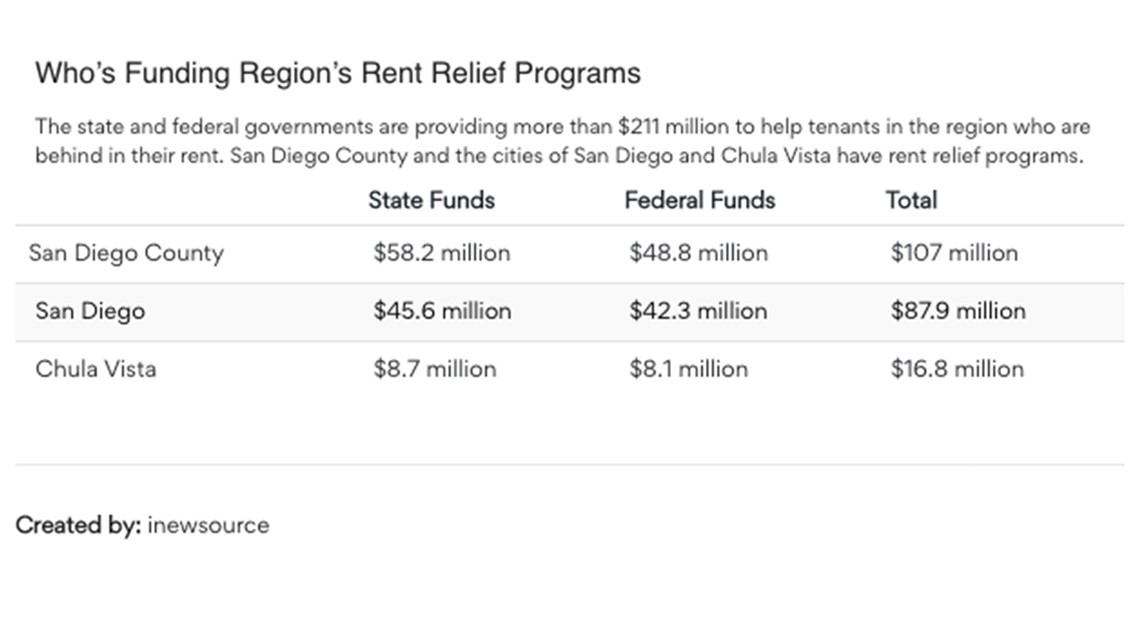
The county and cities of San Diego and Chula Vista received the assistance because the aid was based on population. Tenants and landlords could begin submitting applications for the funds this month.
The new programs go beyond covering rent. They also help tenants with utility bills and other household expenses. There’s also a possibility that a portion of future rent will be covered if money is still available.
This time, tenants also won’t be asked about their citizenship, which means undocumented or mixed-status families can apply for rent relief.
That’s a big deal, said Roberto Alcantar, chief strategy officer with the Chicano Federation, one of more than a dozen nonprofits the San Diego Housing Commission contracted with to help people apply for the city’s program.
These changes, coupled with increased funding and resources for outreach, have made a difference, Alcantar said. More people are eligible to apply this time, and more people know how to access it, he said.
Tenants were the ones applying for rent relief last fall, but now landlords are also reaching out to collect what they are owed, said Brenda Aguirre, a family resources navigator with the Chicano Federation.
Lilley with the Southern California Rental Housing Association said that for property owners the promise of collecting 80% of a tenant’s back rent is “like a gift, because otherwise there’s virtually no chance that they’d ever recover that.”
Still, she acknowledges that not all landlords will want to participate.
“We all know those people who have a very strong sense of right and wrong, and to feel like they have been taken advantage of is not an option,” she said of accepting anything less than the full amount.

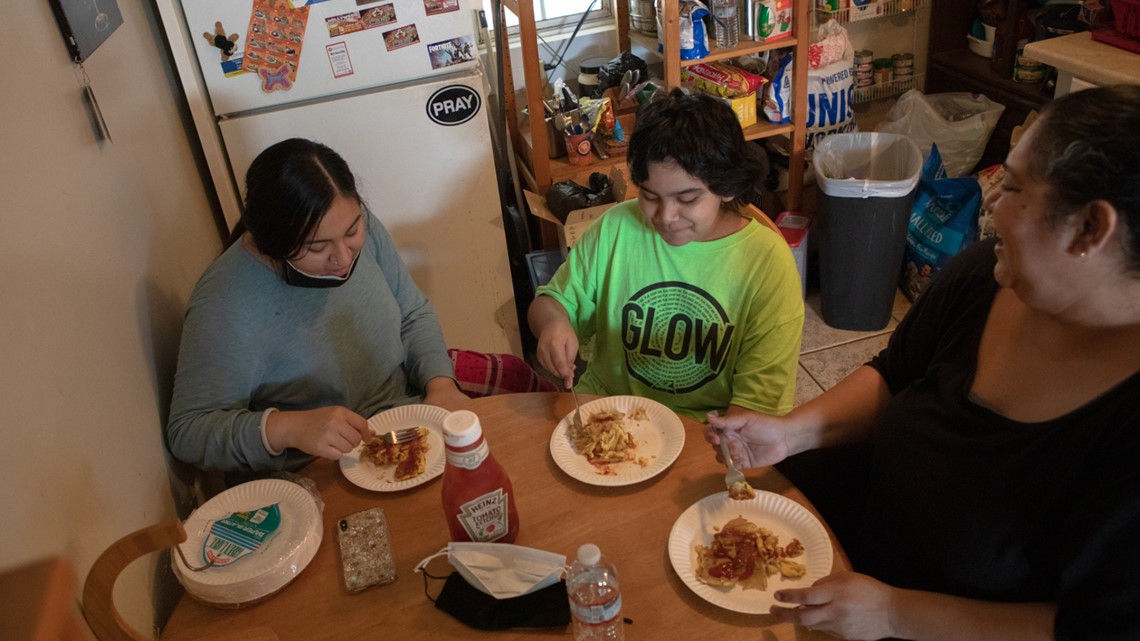
Martinez, who advocates for renters, said tenants across the region are being intimidated into leaving their homes because of questionable 60-day eviction notices. She said that’s what’s happening to Mendoza, the single mom in Imperial Beach.
inewsource reached the property manager Mendoza has been dealing with over her eviction notice. He insisted she isn't being evicted and the owner is working with lawyers on the matter. He declined to comment further and would not give his name.
Mendoza knows she doesn’t have to immediately leave her apartment because even tenants with the most resistant landlords are protected until eviction moratoriums expire.
inewsource is a nonprofit, independently funded newsroom that produces impactful investigative and accountability journalism in San Diego County. Learn more at inewsource.org.


